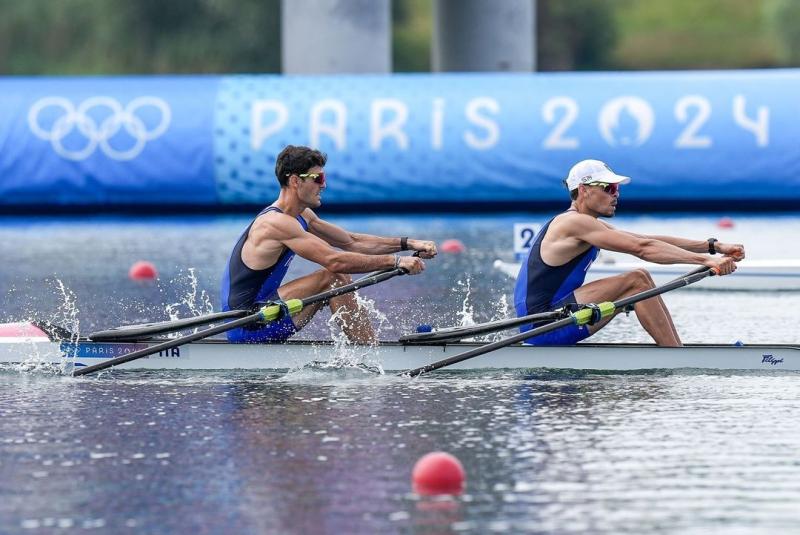If you’ve watched any Italian athletes competing at the Paris 2024 Olympics in recent days, you may have noticed a recurring thread: The color blue. Unlike some nations whose uniforms are likely to feature their flags’ colors, Italy defaults to dressing its athletes in azzurro, often described as a saturated sky blue.
The teams themselves are called the Olympic Azzurri. Outside of the Paris games, the Italian flag’s colors are relegated to second place in national sports, too.
Azzurro also looms large beyond athletics: Many Italian military uniforms feature the shade. The color isn’t random but goes back to a time before Italy was unified in red, white and green; the distinctness of azzurro from darker shades of blue, or blu, was forged early on, even in the language.
The word azzurro, or azure in English, derives from the Arabic and Persian lāzaward, known across the ancient world for Lapis lazuli, a prized stone primarily mined in what is today Afghanistan. Used to create pigments, lapis lazuli was at times worth more than gold. Today, Italian is one of a few languages that separates blue from azure in everyday speech. (The sky isn’t blu, it’s azzurro.)
There are many theories for why some languages have more expansive color wheels than others. One study carried out at Lumière University Lyon 2 in France looked at how cultures’ proximity to bodies of water and light exposure might have influenced the development of words that differentiate between blue and green.
“Living near a lake increased the chance of having a separate word for ‘blue.’ So did living in a larger society,” says Dan Dediu, one of the researchers on the study. “That means visual perception, culture, and environment all play a role in shaping how a language carves up the color spectrum.”
Could this be the basis for the separation of blue and azure in the Italian language? It’s hard not to wonder when you look at the color of the shining Mediterranean sea and the endless sky — both intrinsic to the Italian peninsula’s appeal. But all we know for sure is that the significance of azzurro in Italian society was inherited from the last of Italy’s royals, the Savoy family, as their official color.
Color coding
Established in the early 11th century, the House of Savoy expanded its rule over parts of the northwest of Italy and France in the early 11th century and in 1861, their descendant Victor Emmanuel II was crowned King of Italy, having led the Italian unification efforts. They reigned until they were deposed and exiled in 1946 with the end of the Fascist government, Mussolini having been declared prime minister by the king himself.
The color associated with the Savoy even throughout these changes in power was apparently chosen around the 14th century by a Savoy member setting sail for a crusade as an ode to the Virgin Mary. The Savoy blue thus derives from Marian blue, the color used to represent the religious figure in art starting around the fifth century. The sanctity of the color was also owed to the fact that it was so elusive in nature — and thus difficult to recreate in art.
The Savoy azzurro carried over to the presidency of Italy, leading to its widespread use, according to the main authoritative body for the Italian language, the Accademia della Crusca: “Azzurro, as is well known, was the traditional color of the House of Savoy, such that there are still traces of it today in the ribbon of military valor awards, in the scarf of officers in high uniform (or picket duty) and in the jersey of athletes representing the national team.” In other words, it’s not just athletes who sport this remnant of aristocratic Italy; it’s also the carabinieri and members of the military.
This Savoy heritage is lost on many Italians and international fans who cheer for the Azzurri at the Olympics, in world cups, and at other events without knowing the original “why” behind the bright baby blue. But for as long as azzurro stays linked to the achievements of contemporary Italian athletes, the color will continue to take on new shades of meaning.













